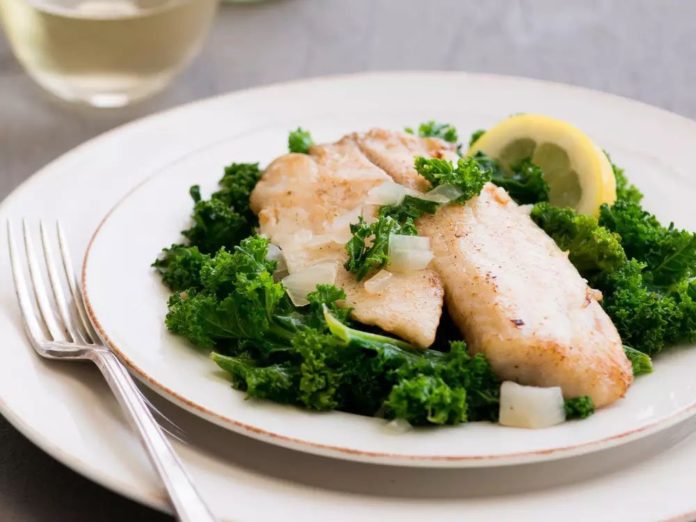Despite healthy living being incredibly in vogue these days, many of us are still not getting enough of the essential vitamins and minerals our bodies require. Part of this is due to poor health literacy and a lack of knowledge regarding what vitamins are, how much we need of each and how we can get them. So, to help us all piece together the vitamin puzzle, we’ve broken down exactly what your body needs, vitamin by vitamin.
What Exactly is a Vitamin?
Put simply, vitamins are organic compounds that are essential for growth and nutrition. There are 13 known vitamins, which fall into two distinct groups: water soluble (meaning the body expels what it doesn’t absorb) and fat soluble (where leftover amounts are stored in the liver and fat tissues as reserves). We humans need to consume a specific amount of each vitamin in order to stay in good health, so it’s important to understand which foods your body craves the most.
Water soluble
- Vitamin B1, also known as thiamine, is essential for helping the body turn carbohydrates into energy.
Recommended Daily Allowance (RDA): 1.2 mg for males and 1.1 mg for females over the age of 18 years.
Commonly found in: soy milk, watermelon. - Vitamin B2 helps in the production of red blood cells.
RDA: 1.3 mg.
Commonly found in: milk, yogurt, cheese, whole grains. - Vitamin B3 promotes healthy function of the skin, nervous system and digestive system.
RDA: Between 14 and 16 mg.
Commonly found in: fish, poultry, whole grains, mushrooms, potatoes. - Vitamin B5 is important for the metabolism of food and plays a key role in the production of hormones.
RDA: Between 5 and 7 mg.
Commonly found in: whole grains, broccoli, avocados, mushrooms. - Vitamin B6 helps maintain brain function and assists the body in the production of red blood cells.
RDA: 1.3 mg.
Commonly found in: fish, poultry, legumes, soy products, bananas. - Vitamin B7 helps strengthen hair and nails and promotes a healthy metabolism.
RDA: 30 mg.
Commonly found in: whole grains, eggs, soybeans, fish. - Vitamin B9, known as folic acid, promotes healthy brain function. It also helps to form red blood cells and is needed for the production of DNA.
RDA: 400 mg.
Commonly found in: asparagus, spinach, broccoli, legumes. - Vitamin B12 plays an essential role in red blood cell formation, cell metabolism, nerve function and the production of DNA.
RDA: 2.4 mg.
Commonly found in: meat, poultry, fish, milk, cheese. - Vitamin C protects cells from damage and promotes a healthy immune system. It is key to healthy teeth and gums, and helps the body absorb iron and maintain healthy tissue.
RDA: 90 mg for males and 7.5 mg for females.
Commonly found in: citrus fruit, potatoes, broccoli, bell peppers, spinach, strawberries, tomatoes, Brussels sprouts.

Fat soluble
- Vitamin A is important for vision and the immune system function, and key to proper heart, lung and kidney function.
RDA: between 700 and 900 micrograms (mg).
Commonly found in: beef, eggs, shrimp, fish, sweet potatoes, carrots, pumpkins, spinach, mangoes. - Vitamin D is also known as the “sunshine vitamin”, as it is produced in your skin when exposed to sunlight. This vitamin helps the body absorb calcium and is therefore particularly important for bone health.
RDA: Between 10 and 20 mg.
Commonly found in: fortified milk and cereals, fatty fish. - Vitamin E helps protect cells from damage and is used to boost the body’s immune system to help fight bacteria and viruses.
RDA: 1,000 mg.
Commonly found in: vegetables oils, leafy green vegetables, whole grains, nuts. - Vitamin K is essential for ensure the coagulation of blood, and also plays a role in bone metabolism and regulating blood calcium levels.
RDA: 90 mg for females and 120 mg for males.
Commonly found in: cabbage, eggs, milk, spinach, broccoli, kale.
Since our bodies cannot synthesize most vitamins, this veritable alphabet soup of vitamins might have you running to the closest pharmacy. However, the best way to ensure your body is getting all the nutrition it needs isn’t with a multivitamin — it’s via your diet.
How Can We Get More Vitamins into Our Diet?

The typical modern diet lacks a number of important nutrients, meaning that many of us are deficient in certain vitamins. The most common vitamin deficiencies are vitamin D, vitamin B12 and vitamin A.
One of the best ways to consume more vitamins is by eating colorful foods. Orange foods, for example, are rich in vitamins A and C, so adding carrots, sweet potatoes or winter squash to your diet can help you ensure you’re getting the most of this vitamin. Similarly, some green foods are a great way to fill your vitamin quotas, with dark leafy greens like kale, spinach and chard chock-full of vitamin K, and broccoli, Brussels sprouts, spinach and bell peppers offering a great source of vitamin C. Additionally, adding some yellow foods like potatoes, bananas and lentils to your diet is a great way to stock up on B vitamins.
However, eating colorful foods isn’t the only way to add vitamins to your diet. Fish and seafood are a wonderful source of vitamins and minerals, including vitamin D and vitamin B12. Seafood is also rich in selenium, which may help prevent cancer, and potassium, which can help improve nerve impulses. Add in the fact that some fish, including Tilapia, are a great source of protein, and combining several of these vitamin-rich foods in one great-tasting meal is monumentally better than any multivitamin.
When you lead a busy life, ensuring you are getting enough of each and every vitamin and mineral your body needs can be a little overwhelming. So, to help you get the most out of every meal, we have compiled a list of vitamin-rich meals to try this fall. As a mild fish, Tilapia has a truly adaptable flavor, making it all too easy to produce tasty dishes that unite the flavors you love with the vitamins you and your family need.
Discover more delicious ways to enjoy Tilapia with Protein Packed Meal Prep: 5 Meals to Cook, Portion, and Freeze on a Sunday.
Photo Credits: Food & Wine, S_L / Shutterstock Inc., Pumpkin ‘n Spice






